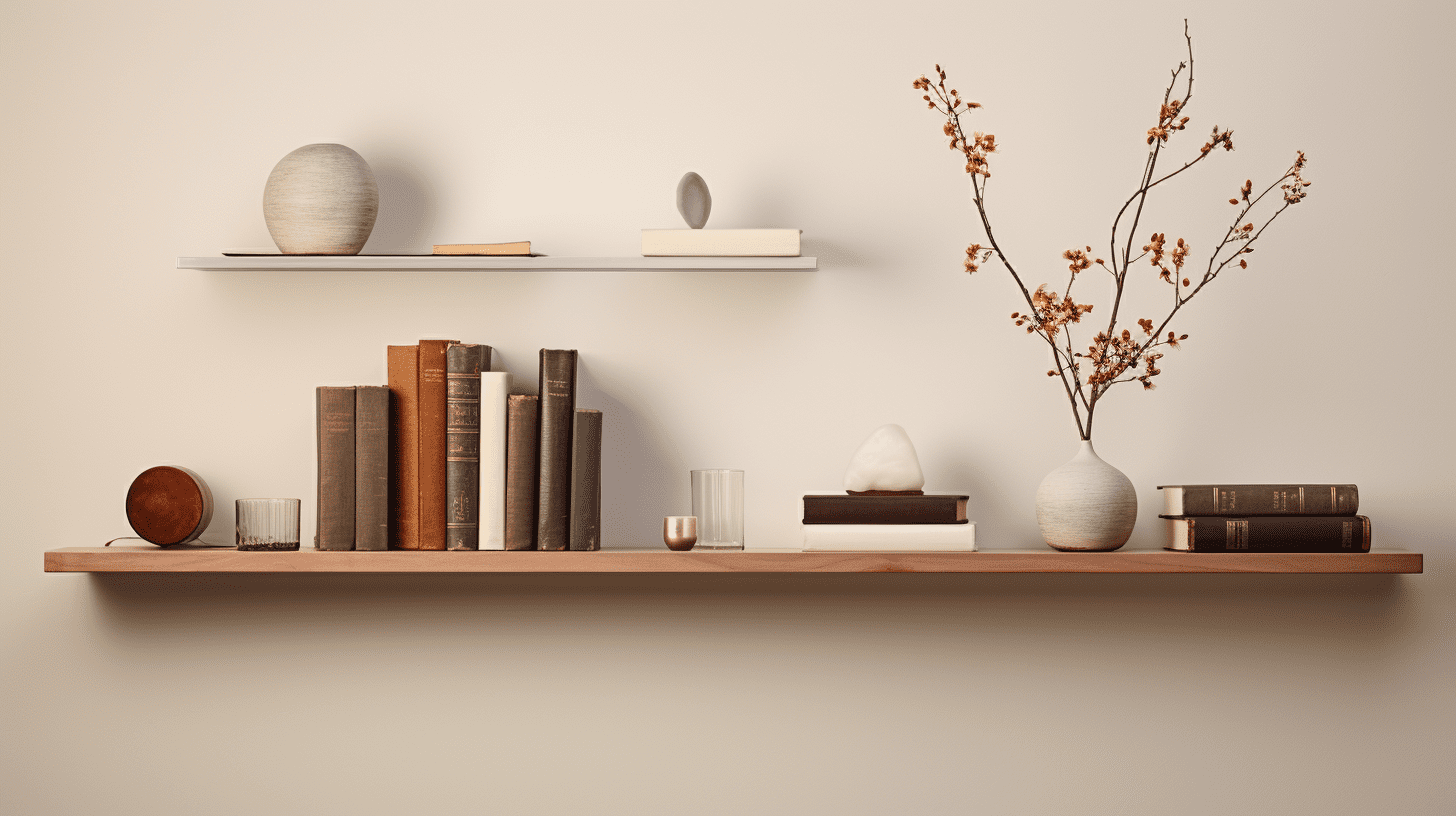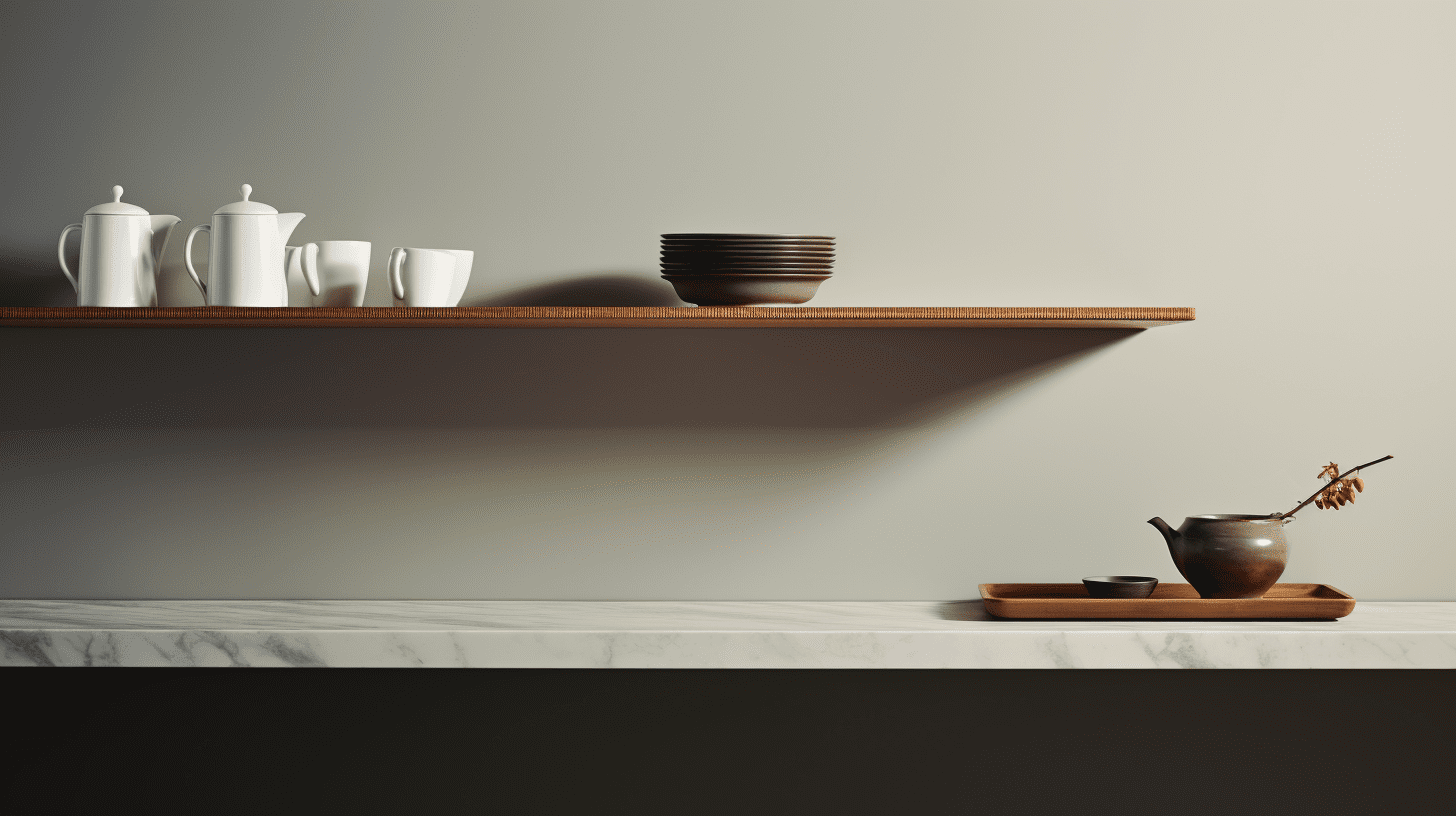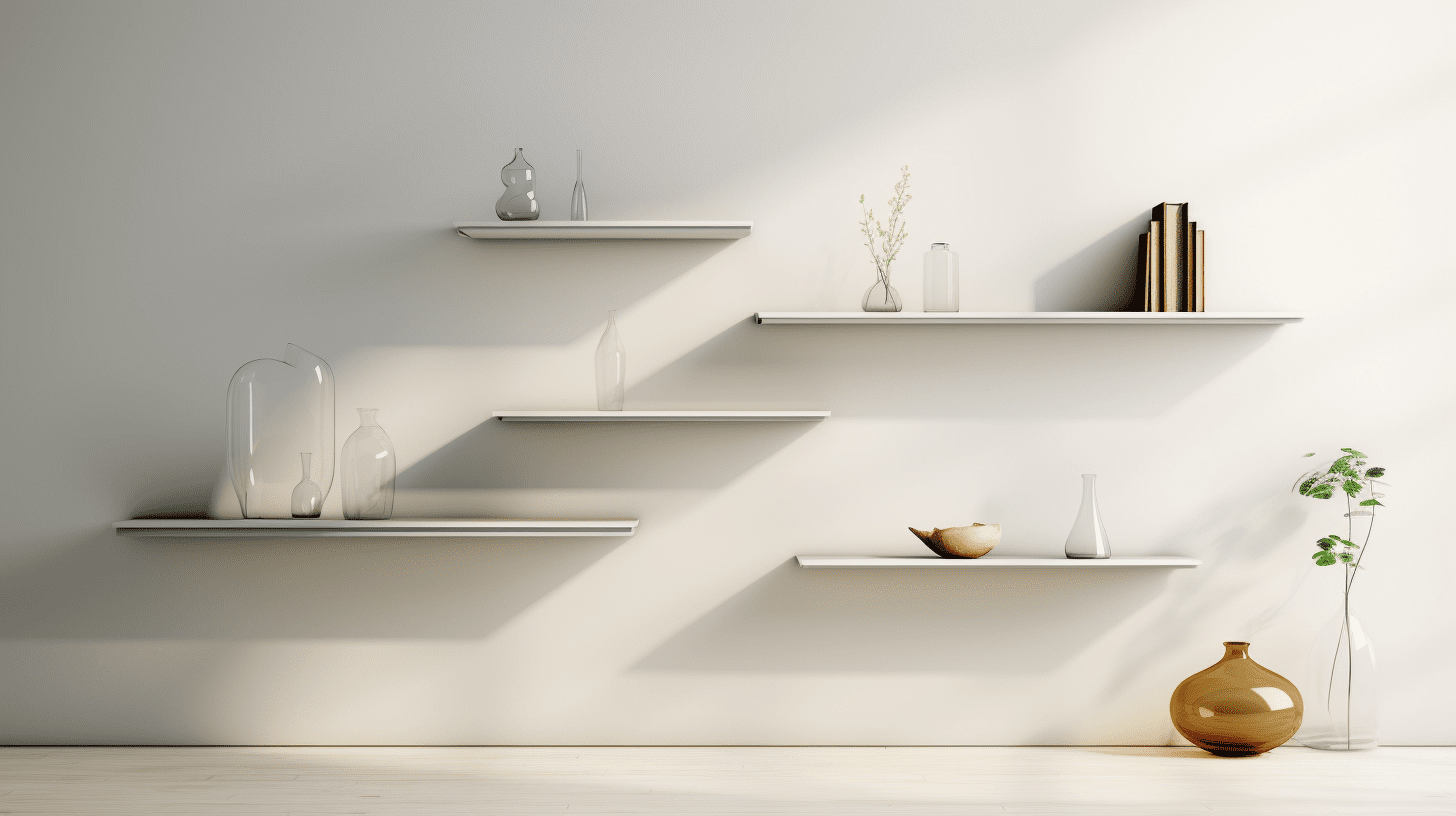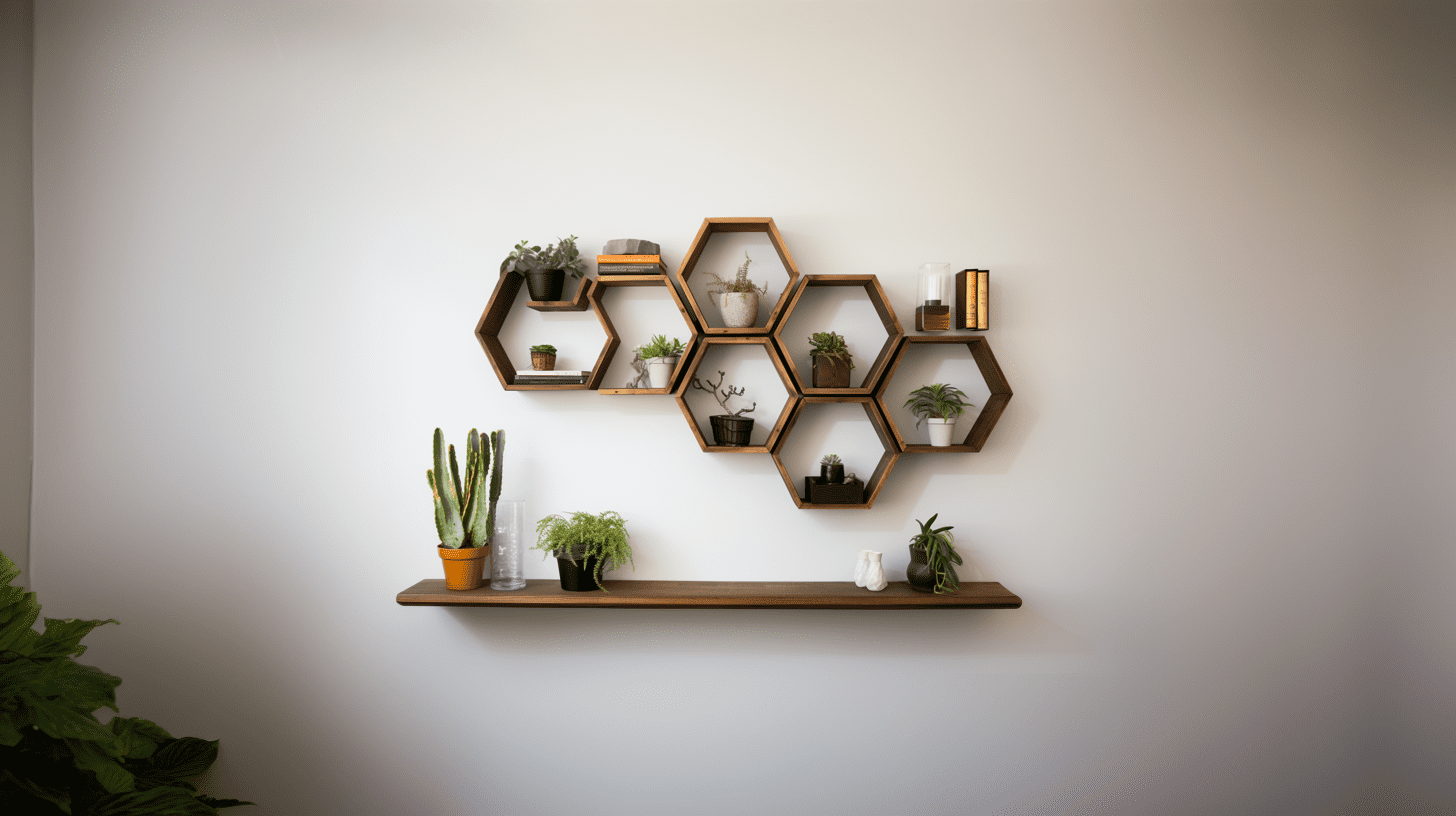
What Is a Floating Shelf?
Are you tired of bulky shelves taking up unnecessary space in your home? Want to add a touch of modern elegance to your décor? Then you need to know about floating shelves.
A floating shelf is a shelf designed to appear as if it is “floating” on the wall without visible brackets or supports. It creates the illusion that the shelf is attached to the wall seamlessly, giving it a clean and modern aesthetic.
Floating shelves are typically constructed with a hidden support system built into the shelf or concealed within the wall. This support system allows the shelf to attach to the wall securely while keeping the hardware hidden. The result is a minimalistic and elegant storage or display solution that can be used in various rooms throughout a home, such as living rooms, kitchens, bedrooms, and bathrooms.
Floating shelves are available in a wide range of materials, including wood, glass, metal, and plastic, allowing them to fit into various interior design styles and serve different functional purposes, from displaying decorative items to storing books and everyday items. They are popular for homeowners and designers looking to maximize space and create a contemporary look in their living spaces.
What Is a Floating Shelf Table of Contents
Key Takeaways
– Floating shelves have a unique design that gives the illusion of being suspended mid-air.
– They save valuable floor space and can be installed in any house room.
– Floating shelves provide a stylish and practical way to display and organize items.
– The installation involves locating wall studs, marking the desired placement, drilling pilot holes, attaching shelf brackets, and securing the floating shelf.
The Unique Design of Floating Shelves
You might’ve noticed that the unique design of floating shelves makes them a popular choice for modern and minimalist interiors. These shelves are designed to appear as if they’re floating on the wall, without any visible brackets or supports. This creates a clean and sleek look that adds a touch of elegance to any space.
The absence of brackets also gives the illusion of more space, making floating shelves perfect for small rooms or areas with limited floor space. Despite their minimalist appearance, floating shelves are incredibly functional. They provide ample storage for books, decorative items, and even small plants.
Also, floating shelves are designed to have a high weight capacity, ensuring you can safely display your favorite items without worrying about them falling or damaging the wall. If no wall studs are available, floating shelves can use drywall anchors, but the weight capacity will be considerably less.
Benefits of Installing Floating Shelves in Your Home
Installing floating shelves in your home can provide functionality and style, allowing you to showcase your favorite items while saving valuable floor space. These shelves are designed to be mounted directly onto the wall, giving the illusion that they float without any visible brackets or supports.
To install floating shelves, you’ll need to locate the wall studs, the vertical wooden beams behind your walls that provide stability. By attaching the shelves to these studs, you can ensure they’re securely fastened and safely hold your belongings. If you can not attach to a wall stud, you can use drywall anchors, but the shelves must be on the smaller, lighter side and can only hold minimal weight.
Floating shelves are also a great storage solution, as they can be installed in any room of your home, from the living room to the bathroom, providing a stylish and practical way to display and organize your items.
Different Types of Floating Shelves and How to Choose the Right One
An article about the different types of floating shelves and how to choose the right one can help you make an informed decision for your home.
Floating shelves are a versatile and stylish storage solution that can enhance the look and functionality of any room.
When it comes to choosing the right floating shelf, there are several factors to consider. First, consider the preferred material, such as wood, metal, or glass.
Next, consider the weight capacity of the shelf and the items you plan to display.
Additionally, think about the style and design of the shelf, ensuring it complements the overall aesthetic of your space.
Lastly, consider the installation process and whether you prefer a shelf that’s easy to mount or requires professional assistance.
Creative Ways to Use Floating Shelves in Various Spaces

There are creative ways to utilize floating shelves in different spaces to maximize storage and enhance the décor. Floating shelves provide a versatile and stylish solution for utilizing wall space effectively. They can be incorporated into any room, from the living room to the bathroom, offering endless storage options.
One creative way to use floating shelves is to create a functional and visually appealing display in the kitchen. Install floating shelves above the countertop to store frequently used items such as spices, cookbooks, and cooking utensils. This provides additional storage and adds a decorative touch to the space.
Another creative idea is to use floating shelves in the bedroom. Install a few shelves above the bedside table to create a mini library or to display your favorite photos and trinkets. This allows you to free up valuable surface space while adding a personal touch to the room.
In the bathroom, floating shelves can store toiletries and towels. Install shelves above the toilet or near the vanity to maximize storage options in a small space. This keeps everything organized and adds a touch of elegance to the room.
Floating shelves can create a functional and organized workspace for those working from home or with a home office. Install shelves above the desk to store books, files, and office supplies. This provides additional storage and keeps everything within reach, improving productivity.
Lastly, floating shelves can be used in the living room to showcase artwork and decorative items. Install a few shelves on a blank wall and use them to display your favorite art pieces, plants, and collectibles. This adds visual interest to the room and creates a focal point that enhances the overall décor.
Find the Perfect Type of Floating Shelf Style for Your Wall
Several construction techniques are used to create floating shelves, each with unique characteristics and design options. Here is a list of types of floating shelf construction techniques:
Find the Perfect Type of Floating Shelf Style for Your Wall
Several construction techniques are used to create floating shelves, each with unique characteristics and design options. Here is a list of types of floating shelf construction techniques:
Bracketed Floating Shelves
These shelves use visible brackets or supports attached to the wall and concealed by the shelf. They are a popular choice for DIY projects and can be made from various materials, including wood, metal, and plastic.
Concealed Bracket Floating Shelves
These shelves have brackets hidden within the shelf itself, providing a clean and minimalist look. The brackets are typically metal and securely attached to wall studs.
Cleat System Floating Shelves
Cleats are horizontal pieces of wood or metal attached to the wall, and the shelf fits onto the cleat. This design provides stability and is often used for heavier shelves or longer spans.
Floating Shelf with Dowels
This technique inserts wooden dowels into the wall and the shelf, creating a strong and hidden support system. Dowel floating shelves can give a sleek appearance.
Floating Shelf with Notches
These shelves have notches or grooves cut into the back, allowing them to fit over protruding screws or hidden supports on the wall. This design keeps the shelf flush against the wall.
Tension Rod Floating Shelves
Tension rod floating shelves use adjustable tension rods installed between the ceiling and the floor or between two walls. The shelves rest on these tension rods, providing a floating effect on the wall with no visible means of support.
Hidden Rod and Bracket Floating Shelves
This design combines hidden metal rods with concealed brackets to support the shelf. The rods are secured to the wall and the shelf slides onto the rods for support.
Floating Shelf with Cable Supports
These shelves use steel cables or wires attached to the wall and threaded through holes or channels in the shelf. The cables provide support while maintaining a modern appearance.
Rope Suspended Floating Shelves

Rope-suspended shelves use sturdy ropes or cables to support the shelf. The ropes are attached to the wall and threaded through holes in the shelf. This technique adds a rustic or nautical touch to the design.
Pocket Hole Floating Shelves
Pocket hole joinery involves drilling angled holes in the shelf and attaching it to the wall with screws. The holes are typically concealed by items placed on the shelf.
Frameless Floating Shelves
These shelves have no visible supports, cleats, or brackets. They are often constructed with a solid frame and are designed to be mounted directly onto the wall, giving the illusion of floating.
Hollow Box Floating Shelves
These shelves are constructed as hollow boxes with open fronts. They are attached to the wall with hidden brackets or cleats. Hollow box shelves are ideal for creating a modern and airy appearance.
Tiered Floating Shelves

Tiered or cascading floating shelves consist of multiple shelves of varying sizes stacked on top of each other. They create a visually appealing display and are often used for decorative purposes.
Corner Floating Shelves
These shelves are specifically designed to fit into corners, maximizing space utilization. They can be constructed using various methods, such as concealed brackets or cleats.
Glass Floating Shelves
Glass floating shelves are tempered glass and supported by hidden brackets or cleats. They provide a modern and transparent look, suitable for displaying delicate items.
Live Edge Floating Shelves
Live edge shelves retain the wood’s natural, irregular edge, adding a rustic and organic aesthetic. They can be mounted using various hidden support methods.
Sliding Floating Shelves
Sliding shelves are mounted on tracks or rails, allowing them to move horizontally. They are commonly used in kitchen cabinets or storage systems to access items easily.
Angular Floating Shelves

Angular shelves have non-standard shapes, such as triangles or hexagons, creating visually interesting and unconventional storage or display options.
Multi-Level Floating Shelves
Multi-level shelves consist of stacked or staggered shelves of different heights, providing various display levels.
Floating Plant Shelves
These shelves are specifically designed for holding potted plants. They often have slatted or open designs to allow for proper drainage.
Combination Floating Shelves
Combination shelves combine different construction techniques, such as wood, metal, and glass, to create unique and visually appealing shelving units.
General Instructions for Installing Floating Shelves
There are different methods for installing floating shelves. Some methods are:
- Using a floating shelf bracket
- Using wooden dowels
- Using drywall anchors when no stud is available
- Using lag screws/bolts
- Using pocket holes
Each method requires different instructions. It is important to decide on the type of installation method to be used, research the best way to install the floating shelf using that method, gather all the necessary materials, and then carefully follow the step-by-step instructions chosen for the project.
Below are general instructions to give a good idea of the work involved in installing a floating shelf.
- Choose a Location
- Locate wall studs
- Mark shelf placement
- Install any hardware being used
- Prepare the shelf
- Ensure the shelf is level
- Secure the shelf to the wall
- Decorate the shelf
Each installation is different! Find the floating shelf that is best for your needs, find installation plans, and follow them to install the floating shelf successfully.


